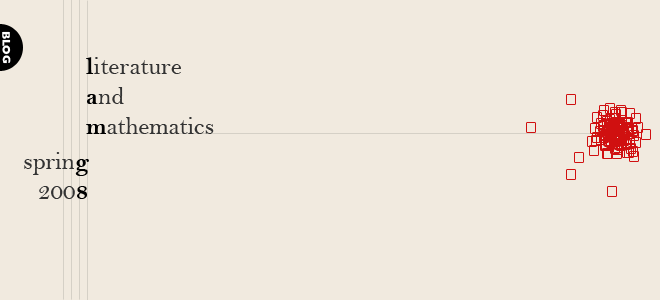Now that I've finished VAS, I'm looking back and trying to integrate my understanding of the book as a whole. Something I've realized is that I didn't see many explicit mathematical references in the book. In We, there were plenty of mentions of specific mathematical concepts, such as the root of -1, integration, Taylor series, etc. I decided to dig a little deeper to flesh out the math allusions in VAS.
Math mainly seems to appear in the asides and illustrative figures that accompany the text. The examples shown often seem to suggest that an over reliance on math and logic remove emotion and morals from our decisions, and result in immoral and harmful behavior, the sort of thing the Goethe quote on the first page alludes to.
For example, there are many tables of mathematical data(64, 92) in the form of measurements of the human skull. This data was used historically to assert the superiority of one race over another. I think the implication that the author(s) are making here is that the tables can only show numbers and data, which removes the influence of our humanity and compassion from the equation.
There are many other examples of this theme in the book, but this post would turn into an analysis paper if I went through them all. If you find a particularly interesting example, post it in the comments.
Friday, February 22, 2008
Mathematical Themes
Posted by
Chris K.
at
4:55 PM
![]()
![]()
Subscribe to:
Post Comments (Atom)

3 comments:
It almost seems like with all of the mathematical asides that no matter where square turns he can't escape the inevitability of math and logic and reason but there is a part of him that is fighting and resisting science. A part that wants to return to the Neanderthal days. I agree that the math only really crops up outside of the central theme of the book but it makes a point.
A not so explicit math usage is in the section where Square is dealing with the Australopithecus and we see the musical notes connected to the patents across the pages. Math and music are very closely related and the notes of a musical passage are like numbers and variables in an equation, and all of this is related to the process of dissecting a body and the human anatomy.
This is a very interesting point that you make. However, while I first agreed with you in the thinking that the mathematical dimensions of a skull do not really describe the creativity, emotion, and evolutionary complexity that lies within, I ended up thinking that basically we can still relate this to math. I mean, memories and feelings are neurologically based, right? There are synapses, thus electricity, and inevitably, math. So how are we defining math here? Are we using it as the human, constructed multiplcation tables or units of measure? Or are we considering it as the tool we use to understand nature? I am not sure if I agree that he is warning against relying too much on math and logic. After all, a big problem with genetic engineering is the passionate and rushed implementation instead of the long-term, studied, scientific observation that would truly test if something is dangerous or not.
Post a Comment